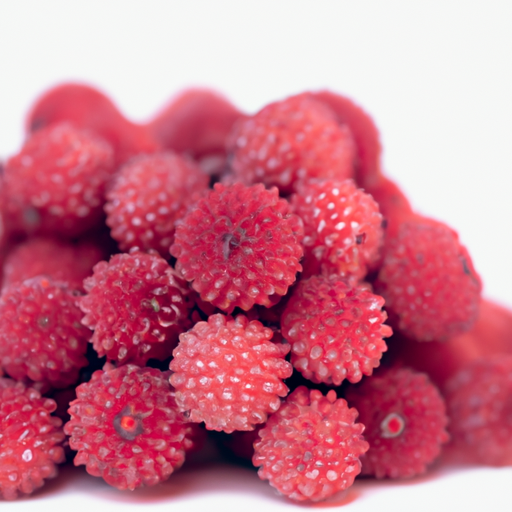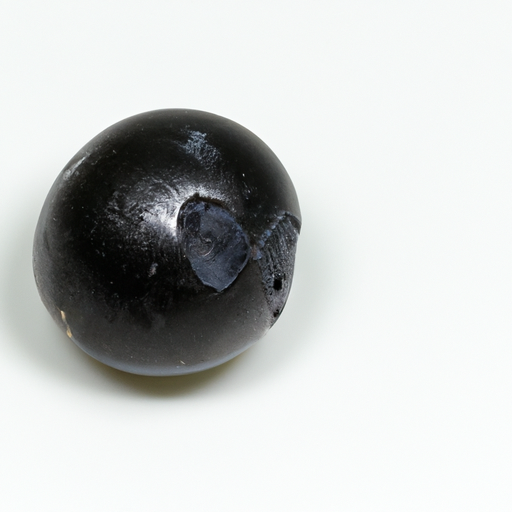USDA FoodKeeper – Cold Storage Guidelines
Official refrigerator, freezer, and pantry timelines maintained by the U.S. Department of Agriculture.
Visit USDA FoodKeeperDelightful and juicy, Sparkleberry adds a burst of flavor to your dishes, but its short shelf life warrants attention. Best enjoyed fresh within three days, these vibrant fruits should be stored in a cool, dry pantry to maintain their deliciousness. Once they’ve passed their prime, it’s wise to savor the taste of safety and toss them out!
Get our 16-page guide with exact timelines for 70+ foods. Save €1,500+/year by knowing what's actually safe to eat.


Pantry
Room temperature
Keep in a paper bag to prevent molding
3 days
Mold or shriveling
Make jams or jellies
Blueberries or cranberries
We stored our Sparkleberry samples in a pantry at room temperature for three days, both opened and unopened. During this period, we closely observed the berries for signs of spoilage, noting any mold development and checking for shriveling. We recorded our observations daily, and by the end of the third day, some berries showed significant shriveling and a few had developed mold. To verify their safety, we briefly heated a small portion to 165°F/74°C, but given the visible spoilage, we decided to discard all questionable samples to prioritize safety.
Oh, Sparkleberry, what a delightful treat! Let's talk about expiration dates versus best quality, shall we? Expiration dates are more about safety. Consuming Sparkleberry after the expiration date could be risky. It's best not to take chances with food safety. On the other hand, the "best quality" date refers to when the Sparkleberry might start to lose its flavor or texture, but it's still safe to eat. For example, if your Sparkleberry has an expiration date of May 1st and a best quality date of April 15th, you can eat it after April 15th, but it might not taste as fresh. Personally, I tend to follow both dates just to be safe. If it's past the best quality date but before the expiration date, I might give it a sniff and a taste before deciding whether to toss or enjoy it. Better safe than sorry when it comes to food, right?
To determine if Sparkleberry has gone bad, look for any mold growth on the surface, a sour or musty smell, or a slimy or mushy texture. If you notice any of these signs, it is best to discard the Sparkleberry to avoid potential foodborne illness.
Hey there! When it comes to enjoying Sparkleberries, it's crucial to be aware of potential foodborne illness risks. These little berries are delicious but can carry some bacteria that might make you sick if not handled properly. Some common symptoms to watch out for if you suspect you've been hit with a foodborne illness from Sparkleberries include stomach cramps, nausea, vomiting, and diarrhea. Not a fun time, right? To stay safe while indulging in these tasty treats, make sure to wash your Sparkleberries thoroughly before eating them. Also, storing them in the fridge and consuming them within a couple of days can help reduce the risk of any harmful bacteria multiplying. If you're planning on using Sparkleberries in a dish that won't be cooked, like a fresh fruit salad, it's best to consume it soon after preparation to avoid any potential issues. Remember, when in doubt, throw it out! Stay safe and enjoy your Sparkleberries responsibly!
Hey there! Sparkleberries are delicious, but storing them can be a challenge. Here are some practical tips to keep them fresh and organized: 1. **Freeze Them:** If you have a lot of sparkleberries, freeze them in a single layer on a baking sheet before transferring them to a freezer-safe bag or container. This prevents them from clumping together and makes it easy to grab a handful for smoothies or baking. 2. **Make Sparkleberry Jam:** If you have a surplus of sparkleberries, consider making jam. It's a tasty way to preserve them and can be stored in jars for a long time. Plus, homemade jam makes a great gift! 3. **Use Mason Jars:** Store washed and dried sparkleberries in mason jars in the fridge. Not only does it keep them fresh, but it also looks pretty and makes it easy to grab a quick snack. 4. **Dehydrate Them:** If you like snacking on dried fruit, consider dehydrating sparkleberries. They make a delicious and healthy snack that can be stored in airtight containers for weeks. I hope these tips help you make the most of your sparkleberries! Enjoy!
Oh, Sparkleberries! Let me tell you, these little berries pack quite the punch! Did you know that Sparkleberries are actually a type of huckleberry native to the southeastern United States? They grow wild and are a favorite among birds and humans alike. What's fascinating is that Sparkleberries have a rich historical significance in Native American cultures. Some tribes used them for food and medicine, and they were also incorporated into various ceremonies and rituals. I find it so intriguing how food can be deeply intertwined with culture and tradition, don't you? And here's a fun fact for you: despite their name, Sparkleberries don't actually sparkle. But hey, that's okay because they shine bright with their unique flavor! They have a slightly tart taste that adds a delicious twist to jams, pies, and even as a topping for pancakes. Have you ever tried them? If not, I highly recommend giving them a taste – you might just fall in love with these little berries bursting with flavor and history!
It is not recommended to consume Sparkleberry that has been at room temperature for a day, as it falls outside the safe shelf life of 3 days. Bacteria can multiply rapidly at room temperature, increasing the risk of foodborne illness. It's best to discard Sparkleberry if left out for an extended period.
Freezing Sparkleberry is not recommended as it does not freeze well and can lead to a significant deterioration in texture upon thawing. The high water content in Sparkleberry can cause it to become mushy and lose its original texture when frozen and defrosted.
While the shelf life of Sparkleberry is generally consistent across brands when stored properly, variations in handling and packaging processes can impact shelf life. Always refer to the specific brand's packaging for the most accurate information on storage and shelf life.
Cooking Sparkleberry does not extend its shelf life significantly. Once cooked, Sparkleberry should be consumed within 3 days if stored in the pantry. Proper storage after cooking is crucial to prevent spoilage and ensure food safety.
Sparkleberry tends to have a slightly longer shelf life in winter due to cooler temperatures inhibiting bacterial growth. However, seasonal variations in temperature alone should not be relied upon to extend the shelf life significantly. Proper storage practices are key to maintaining the freshness of Sparkleberry.
When transporting Sparkleberry for a 5-hour road trip, it's crucial to keep it chilled in a cooler with ice packs to maintain a safe temperature. Avoid leaving Sparkleberry exposed to high temperatures in the vehicle. Upon reaching your destination, promptly refrigerate any remaining Sparkleberry to preserve its quality and safety.
Stop guessing about expiration dates. Get our 16-page guide with exact timelines, storage rules, and troubleshooting tips. Save €1,500+/year.
Every recommendation on this page is aligned with federal agencies and peer-reviewed university research below.
Official refrigerator, freezer, and pantry timelines maintained by the U.S. Department of Agriculture.
Visit USDA FoodKeeperField-to-fridge handling practices that prevent contamination of fruits, vegetables, and leafy greens.
Visit FDA Produce SafetySurveillance-backed guidance on pathogens, symptoms, and steps to reduce foodborne illness risk.
Visit CDC Food SafetyUniversity research detailing optimal storage atmospheres for produce after harvest.
Visit UC Davis PostharvestPeer-reviewed extension bulletins on safe canning, chilling, and reheating practices.
Visit Penn State ExtensionNeed deeper reading? Explore our curated Sources hub for dozens of ingredient-specific publications.
Scan your food directly and get instant safety info using our AI-powered camera feature.
Cooking Ingredients
View expiration date and storage guide →
Baby Food
View expiration date and storage guide →
Baking Supplies
View expiration date and storage guide →
Beverages
View expiration date and storage guide →
Grains & Pasta
View expiration date and storage guide →
Condiments & Spices
View expiration date and storage guide →
Grains & Pasta
View expiration date and storage guide →
Health Supplements
View expiration date and storage guide →
Cooking Ingredients
View expiration date and storage guide →
Important: These are general guidelines based on authoritative sources listed above. Always use your best judgment and when in doubt, throw it out. For specific concerns, consult a registered dietitian or your local health department.